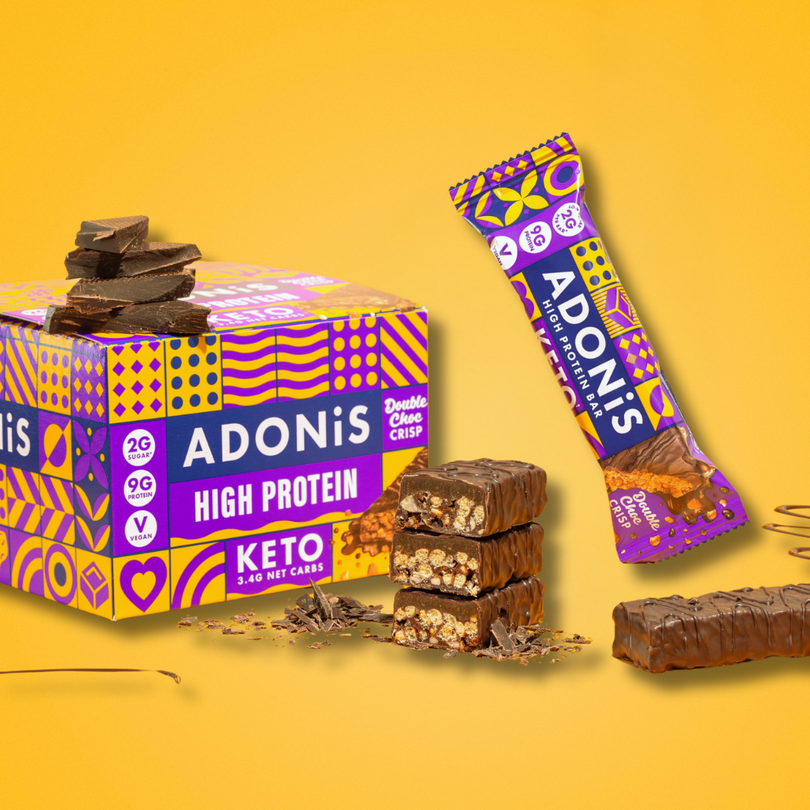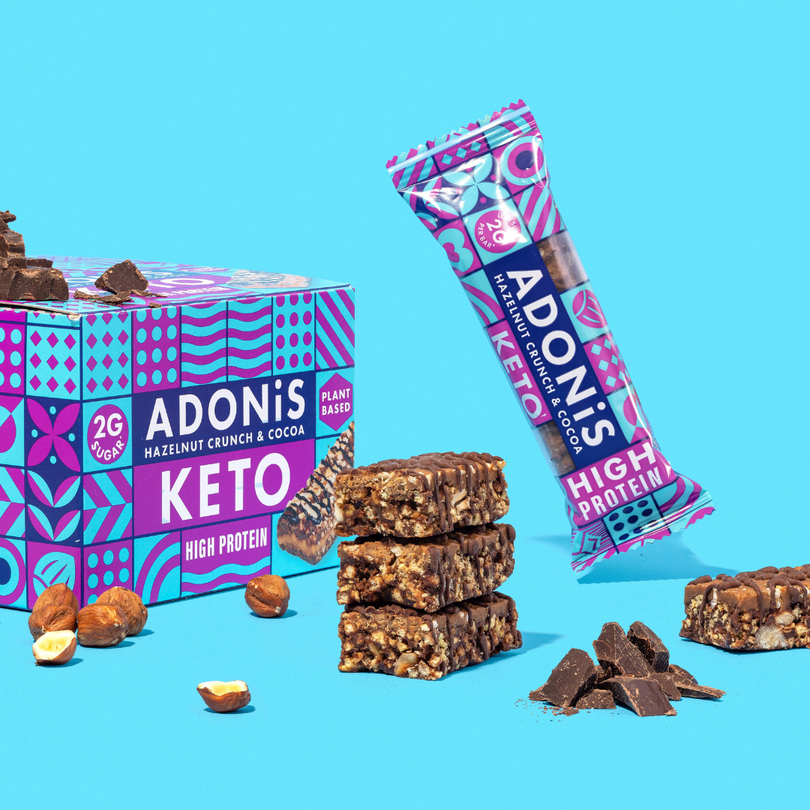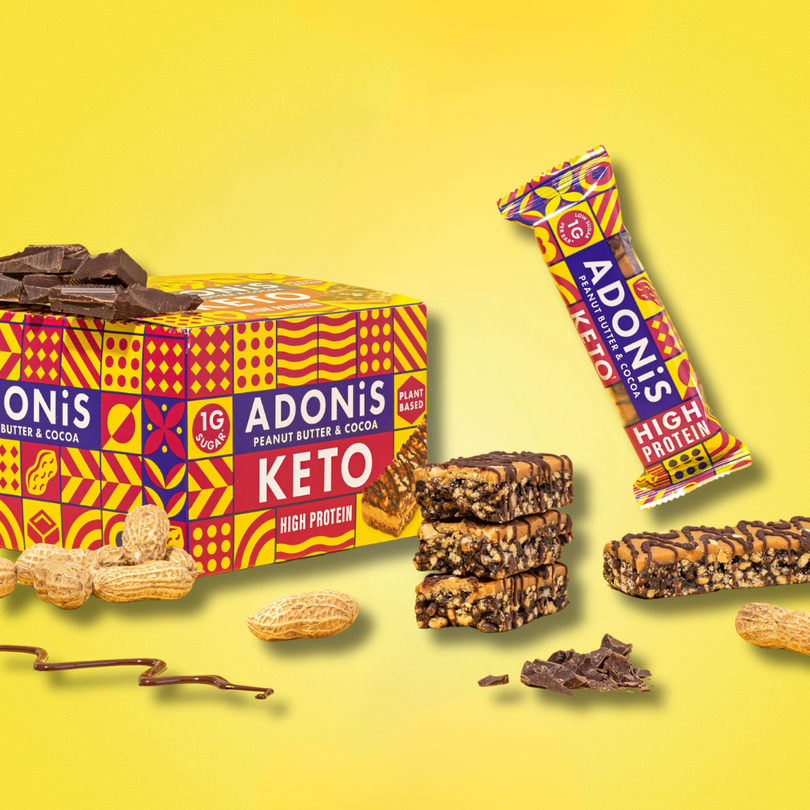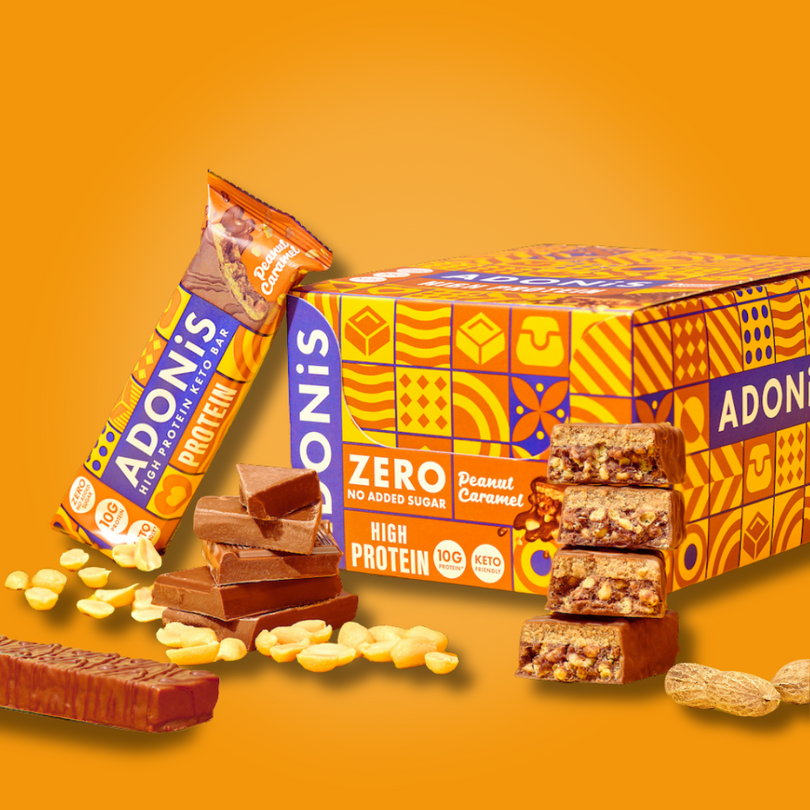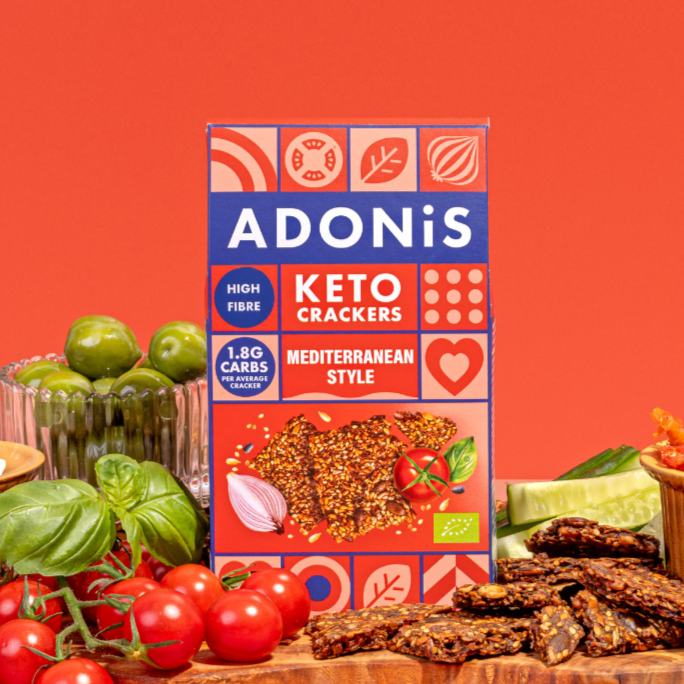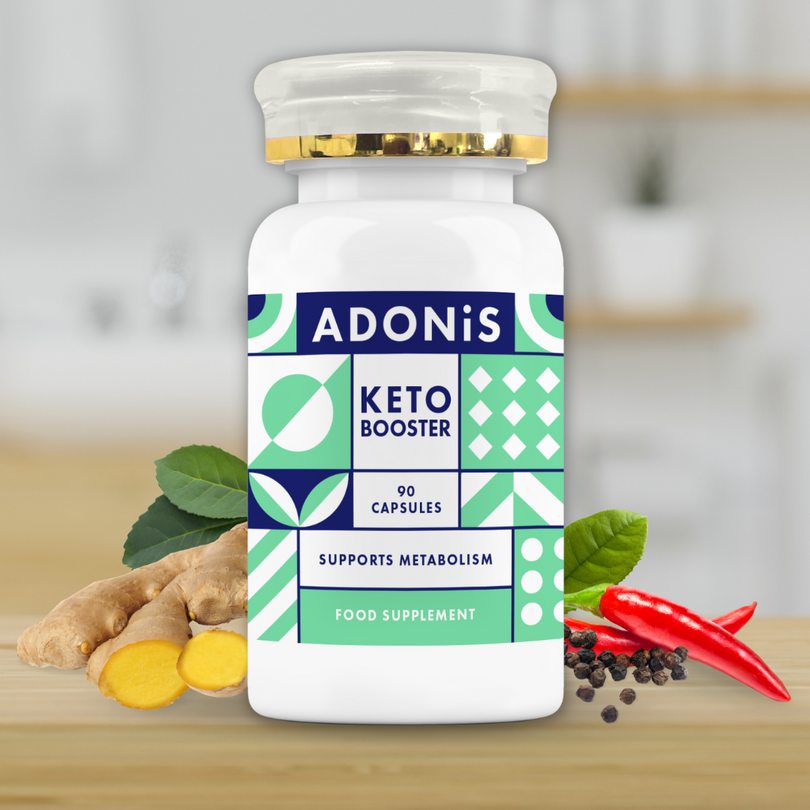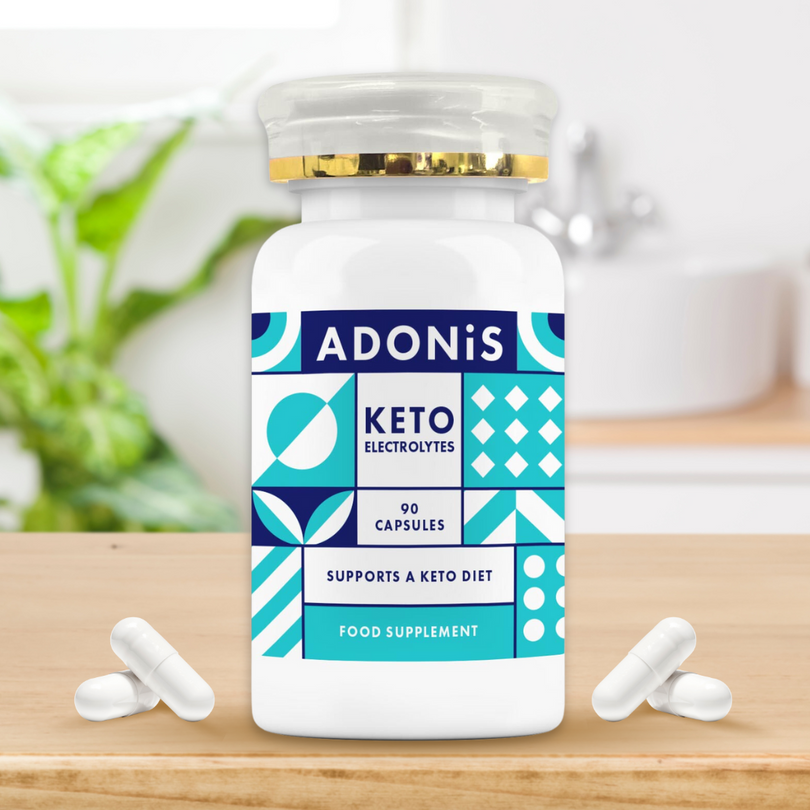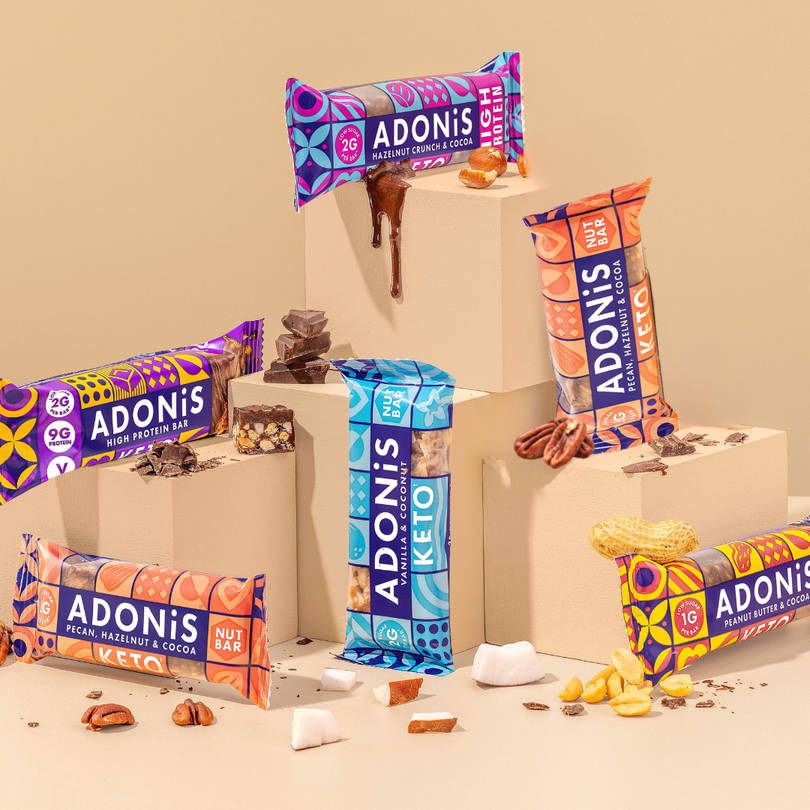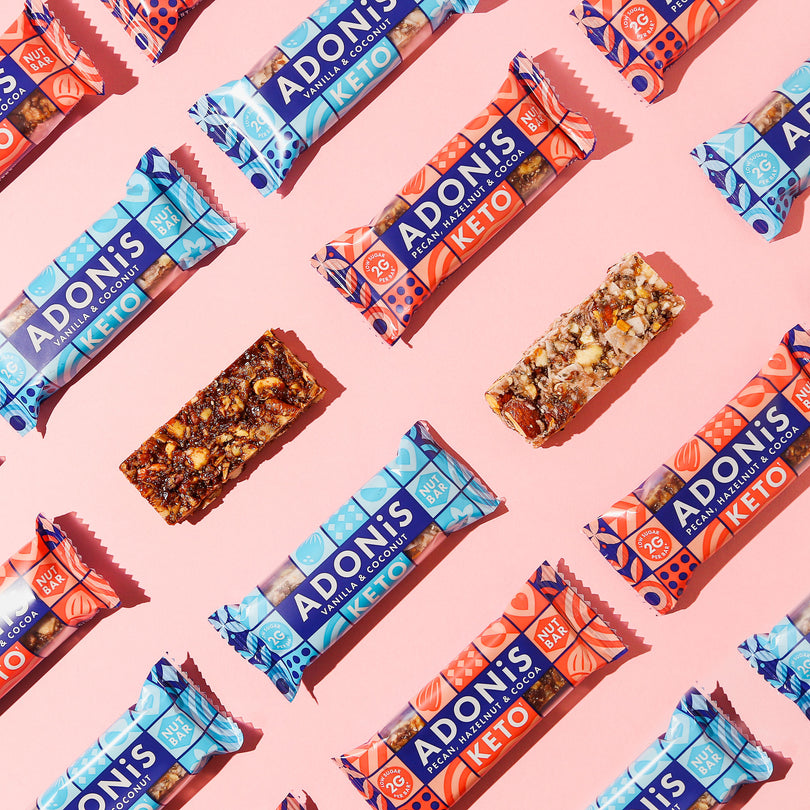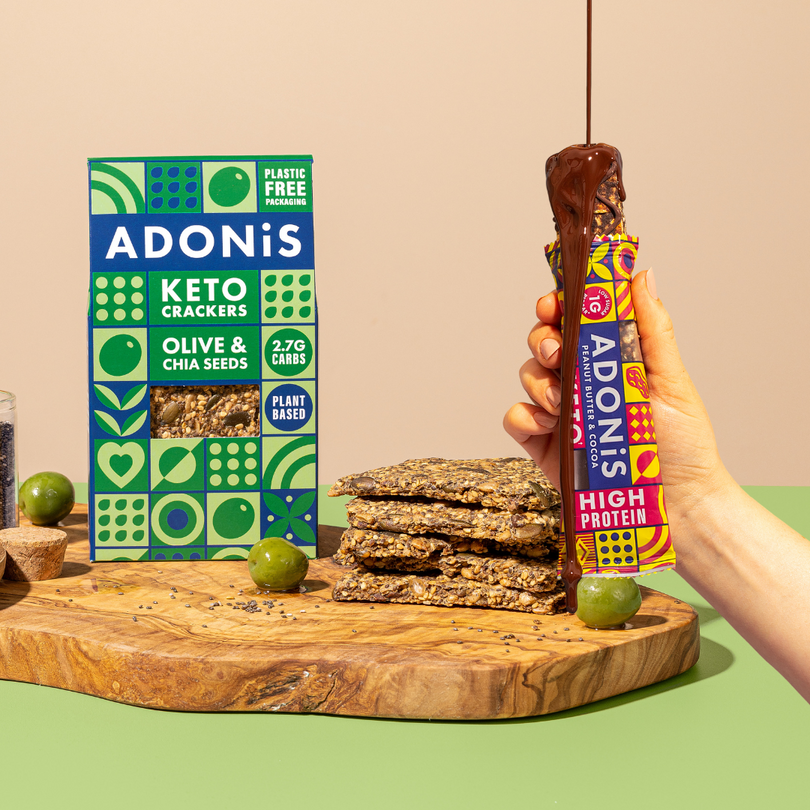INTRODUCTION TO KETO LIFESTYLE
18 min read
What is a Keto diet?
The Ketogenic diet – or “keto” – is a popular high-fat, low-carb (LCHF) diet. It’s a diet that focuses on addressing the problems we have with carbs and using that to help burn bodyfat.
The key facts about the Ketogenic diet are really easy to understand:
- It’s a high-fat, low-carb diet
- It’s a way of changing your eating behaviours
- It can take some getting used to, but it works for a lot of people
If that’s all you need to know, that’s fine. What is really interesting is how it works, what it does for people, and what kind of results you might get from it.
How does Keto work?
The Keto diet’s main principle is reducing your carb intake and replacing it with fats and protein. These are important changes for a few reasons but the main one is that most people’s diets are sabotaged by their carb habits.
By reducing the amount of carbs in your diet and replacing them with high-satiety fats and proteins, we get to side-step many of these problems. The carbs you will be eating are far healthier and more filling – think leafy greens, bell peppers, and other high-quality veg.
When we reduce our carb intake, we shift towards fat-dominance. This is important for keto because the more time you spend with fats as your main form of fuel, the more efficient you become at using them. This is why we can’t just do keto for a few weeks – it gets better with time!
This process is called keto-adaptation, and it’s what happens when your body uses ketones as its main form of fuel. This is instead of glucose, which we get from carbs. You’ll still be producing some glucose internally, but it’s not coming from tons of carbs in your diet.

When we are keto-adapted, we’re using fats as our main source of energy. This means that the fats from both your diet and bodyfat are more effectively utilised as energy – burning them up and changing your overall metabolic set-up.
I love this change because it rewards consistent effort over time, it’s something you can work on as you go with your diet, and it’s actually really enjoyable!
One of the biggest changes you’ll experience on keto is an improvement of behaviour, cravings, and habits. These are what make or break a diet.
For example, the time and effort you put into your choice of fats matters more on keto. They’re the centre of your diet and you might never have given them the time and care they need before. This change can be huge.

Fats control our hormonal health, they’re our long-term energy store, and the ones you eat make a huge difference to health. Keto helps you clean up your dietary fats and focus on the best ones – things like olive oil, coconut oil, fatty fish, and avocado.
By changing your fat behaviours they make you a healthier, happier person. The same thing happens with dietary proteins.
Keto diets are usually moderate to high protein. We need protein to help keep us full and offer our body the best muscle-building and fat-burning environment. Keto thrives in the place where high-quality fats and proteins overlap.
Keto diets are usually moderate to high protein. We need protein to help keep us full and offer our body the best muscle-building and fat-burning environment. Keto thrives in the place where high-quality fats and proteins overlap.
These are the important food groups that you might have neglected – but a keto diet shifts the focus back to them. They’re going to make up a ton of your diet and will contribute to the health and wellness benefits of a good keto diet!
Different type of keto diets
We’ve talked about types of keto diet at length before – but it’s important to note they’re not all the same thing. You can structure a low-carb, ketosis-based diet many ways depending on your goals and schedule.
- Normal Keto is a high-fat (70%+), low-carb (<10%) diet focusing on fat quality
- Lazy Keto is like keto but with a more relaxed approach: no macro counting
- Workout Carbs – where you are keto except for before/during a workout
- Cycling is about periods of high and low carb based on exercise scheduling
- High protein keto increases dietary protein to support sports performance
- Intermittent Fasting + Keto uses fasting windows along with keto’s LCHF approach
These all change the way Keto works in their own way. They offer different structures, schedules, or balances to account for who you are and what you’re trying to achieve!
Health Benefits of a keto diet
We’ve touched on some of the benefits of a keto diet, but let’s get deeper.
What happens? Why should you care? What kind of results can you expect? That’s what we’re going to get into…

Carb-management (guiding principle of Keto)
Improving your carb habits fights off tons of bad dieting. Most people over-eat on calorie-dense carbs that don’t fill them up.
It’s the first step to cutting out a wide range of bad influences that – simply by removing – will improve your health and wellbeing:
- Reducing processed sugar intake
- Cutting out high-salt processed carb junk foods
- Controlling your intake of processed low-quality grains
- Improving the stability of blood sugar levels
- Evening out energy levels across the day
These are huge benefits even before we get into what keto does for you. Just not being on a bad diet is a huge deal!
Type 2 diabetes-control blood sugar control (other related conditions)
Stabilising your insulin levels is especially important for reducing the risk of developing diabetes.
Diabetes happens when your body develops resistance to its own insulin, primarily in response to over-eating and specifically too many carbs. These processes take time and are closely related to diet.
If you can reduce your carb intake and improve your diet, both pre-diabetes and type-2 diabetes can be beat.
Weight loss
Weight loss is obvious. Keto is a weight-loss, fat-burning diet and you’ll see both rapid and then sustained weight loss.
The mechanisms behind keto’s effect on your food choices and calorie intake help burn fat. You’ll be eating better quality foods that are more satisfying, help control your cravings, and provide sustained-release energy.
A diet that focuses on high quality fats and proteins is a great way to lose weight. Behaviour change like this is an amazing benefit to your weight-control, while cutting out old, bad carb habits can defeat over-eating for many people.
Metabolising your bodyfat as fuel pairs up exercise and activity with bodyfat, improves your fat-burning efficiency, and could be the perfect diet to lose weight and enjoy it!

Neurological conditions: Keto, Epilepsy, and Degenerative Disease
Keto has bene shown to benefit some neurological conditions. These should always be discussed with – and supervised by – a doctor or registered dietitian.
The most common and interesting area is epilepsy. In children, the risks of seizure are significantly reduced on a LCHF Ketogenic diet, sometimes over a 50% reduction, by lowering glutamate levels in the brain, which is closely related to seizure risk.
Better fat-metabolism is also important in age-related brain conditions. Carb metabolism drops off steeply as we age, especially in the brain, and this can lead to poor brain energetics. This is one of the main risk factors in diseases like Alzheimer’s and Parkinson’s.
Ketogenic and other LCHF diets can be used to maintain brain energetics and health. They’re perfect for helping your brain age healthily!
Better brain energetics are also useful for healthy people!
Improving fat metabolism is great for your brain function and cognition for two reasons:
- Fat-burning means a consistent energy supply throughout the day and reducing the peaks and troughs that come with a carb-centred diet
- Supporting – at least anecdotally – better mental clarity, performance, and circadian rhythms
These are the reasons why we love keto, aside from the physical changes. We feel and perform better – and it’s hard to explain just how good it feels until you try it!
Disease markers

We’re going to make this one easy and point you in the direction of the expert opinion:
“evidence from clinical and preclinical studies indicates that LCHF diets consistently improve all other markers of cardiovascular risk—lowering elevated blood glucose, insulin, triglyceride, ApoB and saturated fat (especially palmitoleic acid) concentrations, reducing small dense LDL particle numbers, glycated haemoglobin (HbA1c) levels, blood pressure and body weight while increasing low HDL-cholesterol concentrations and reversing non-alcoholic fatty liver disease (NAFLD)”
There are many diseases that benefit from the improvements we’ve already mentioned to improving the quality of your diet. Changing to improve your food choice, fat-metabolism, and beat your cravings means better all-round health.
You’re going to see less risk across thew board if you’re changing from a “normal” (i.e. bad) diet to something structured and deliberate like Keto!
Energy levels-therefore increased physical performance/sport endurance
Keto is specifically useful as a way to improve your ultra-endurance performance. If you’re into running, cycling, swimming, hiking, or anything else that requires going the distance, you’re going to want deep energy stores.
Keto opens up the 10,000s of calories of energy in your body as a fuel source. It also protects your internal carb stores for high-effort bursts of energy, which are still going to be important in long-distance sport like triathlon and ultra-marathons.
Keto trades off the peak energy and constant refeeding of carb-rich diets for performance at a sustained level.
The same consistency through the day we mentioned above applies when we turn up the metabolic heat. Low-intensity exercise performance comes up and the glycogen-sparing means you’re not completely useless if you have to turn up the pace and make a sprint.
It’s not about maxing out your muscle mass or 100m run. It’s about keeping going and helping you improve the pace you can keep and hold!
Getting started:
So, you know what it’s about and you know that the benefits are worth experiencing for yourself. What can you do to get started with a keto diet?
Is Keto right for you?
This is the first question for everyone: is this the right diet for you?
Look at what you eat now and how you live. It needs to line up with keto well. First, you need to make sure you’re able to cut carbs out and don’t have any medical conditions (like diabetes, e.g.) that might experience complications with it.
Second, you need to make sure it’s a reasonable thing that you could see yourself sticking with for at least a few months. Keto isn’t a short-term, crash diet or a fad. It takes commitment and you shouldn’t try this diet if you’re just looking to lose a ton of weight at once.
It’s a sustainable, effective diet. You don’t need to rush it – you need to get it right. Focus on quality, not pace.
What to eat:
Macros breakdown
There are a 2 major ways to do keto.
The first is a hardcore all-fat approach. We use this often, and the idea is to get around 80-90% of your calories from fat, and the remainder from protein and carbs.
You can also take a modified approach and focus on fat and protein together. In this model, you keep carbs below 20-30g per day and use a moderate-protein, high-fat diet.
These are both totally legitimate ways of getting into ketosis. More protein generally means better satiety and improving your muscular/performance results, so consider how much activity you’re doing – more activity means more protein.
Proteins
Proteins on a keto diet should be the same as any other good diet: whole foods, focusing on completeness and quality.
Like fatty fish (salmon), white fish (Basa and cod), chicken, turkey, and other poultry, high-quality red meats (ideally grass-fed), omega-3 rich eggs, cultivated dairy like cheeses and yoghurt, soy and tofu.
These should make up the majority of your proteins. Most whole-food protein sources are a good idea for keto, just make sure they’re reliably fed and sourced – the quality changes fat composition pretty heavily!
Fats
Fats are the foundation of the keto diet and that means you need to set up a staple of high-quality fats. This means a good selection of both saturated and unsaturated fats: your diet is going to need them both.
Saturates like coconut oil, MCT oils, high-quality butters, grass-fed beef and high-quality cheese.
Unsaturated fatty acids
These should be the main form of fat in your diet. They are the classical “healthy fats” that we all grew up around – they’re liquid at room temperature and offer great hormonal and cholesterol benefits: Nuts and seeds, avocado, olives and olive oil, fatty fish, seafood, yoghurt, soy and soybean oil, sunflower seeds and sunflower oil.
Carbs
Keto still requires carbs. It’s low-carb, not no-carb!
The carbs you choose have to be specific because you’ve not got many of them. They have to do the work of providing fiber, vitamins, and minerals despite being a much smaller portion of your diet. So we need to focus on top-quality veg with plenty of fiber: Bell peppers, leafy greens, lettuce, mushrooms, eggplant, cucumber, green beans, tomatoes and celery.
These are just a handful of the most important veg you should be putting your time into. The idea is simple: high-quality, nutrient-packed veg with as few carbs as possible. This helps keep you healthy without knocking you out of ketosis!
What not to eat:
Proteins
Proteins on keto are no different to any other diet: avoid the processed meats. These are the low-quality foods like hotdogs that contribute to digestive distress and Colo-rectal cancer risk.
Just because you’re eating more fats and meats, there’s no reason to lower the quality. We need to focus on better choices – when it comes to protein, think whole foods. Quality is what matters here.
Fats
Dietary fats can be bad if you’re irresponsible with your choices or your balance of saturated and unsaturated fats is off. As ever, quality makes the difference, and we want to avoid low-quality animal fats and low-quality vegetable oils: Fatty pork, processed ‘pink’ meat like hot dogs, poorly-reared animal products, fat-and-carb foods (like pastries), hydrogenated fats, low-quality butter and fried foods.
We want to make sure our fats are good because they’re the whole diet. It’s high-fat, so we can’t half-effort the quality!
Carbs
Don’t waste your carb intake. You only have 20g, you need to make every gram count – and it’s important to remember that vegetables aren’t all equal on Keto – some are great, some don’t work.
- Potato
- Sweet potato
- Carrots
- Butternut squash
- Corn
- Parsnip
- Peas and chickpeas
- Beans
These are fine foods for a normal diet, but on keto they’re too high-carb and low-nutrient. The density of nutrients and fiber relative to carb content matters – and these foods will really limit just how much veg you can eat.
We want to get the most from the least – and these foods aren’t efficient enough to be perfect for keto!
Risks and side effects of Keto diet
While keto is healthy, it does represent a big change to your body and its energy systems. Some people experience side-effects when they rush the process or are very carb-dominant before they start.
These side-effects are pretty mild but they’re worth knowing about so you can get around them.
Keto flu: flu-like symptoms including fatigue, brainfog, and/or achiness due to low energy and mineral availability.
Keto breath: the result of increased blood ketone levels, breath may smell sickly sweet, temporarily.
Digestive discomfort: some people will have a difficult time adjusting to high-fat diets and may experience cramping, constipation, or diarrhoea.
The worst of these can be avoided by making sure that your diet is focusing on proper veggie intake, electrolytes from veg and nuts/seeds, and being patient!
You don’t need to go cold-turkey on carbs, and sometimes a patient reduction over a few weeks can save you the worst of these risks. Make sure you’re getting plenty of fiber from dark leafy greens and high-quality nuts and seeds. Drink plenty of water.
It’s important to give keto proper time, effort, and attention. It will reward you with results but getting it wrong does carry these mild risks.
Practical Lessons: Busting Myths and Keto FAQs!
A simple macronutrient and calorie tracker – like myfitnesspal – can help you log your foods and keep up with what you’ve eaten today. It’s a great way to know what you’re eating across a day and structure your daily habits.
Keto relies on getting your fats and proteins at the right level and keeping your carb intake low. You need to at least build up an idea of how much you should be eating – and what – so you can refer back to them in future.
At least a month of macro tracking would be a great idea to get your keto diet off to the right start. You can default to a lazy keto diet, if you’d like, but it’s important to remember that the more well-calibrated your diet, the better your results!
Final Thoughts
The Keto diet is getting more popular because it keeps working – and in ways that people enjoy.
It’s not just a diet about restricting carbs. It’s about adjusting your relationship with food in a broader way and focusing on some of the areas that most people neglect. It’s a celebration of healthy fats and a change from the habits that make many of us unhealthy.
Keto is an enjoyable way to lose weight, change your body, and improve how you eat. That’s the most important introduction to keto that you’ll get, and one that should define how you approach it – focus on the habits and the quality, and everything else will follow!


